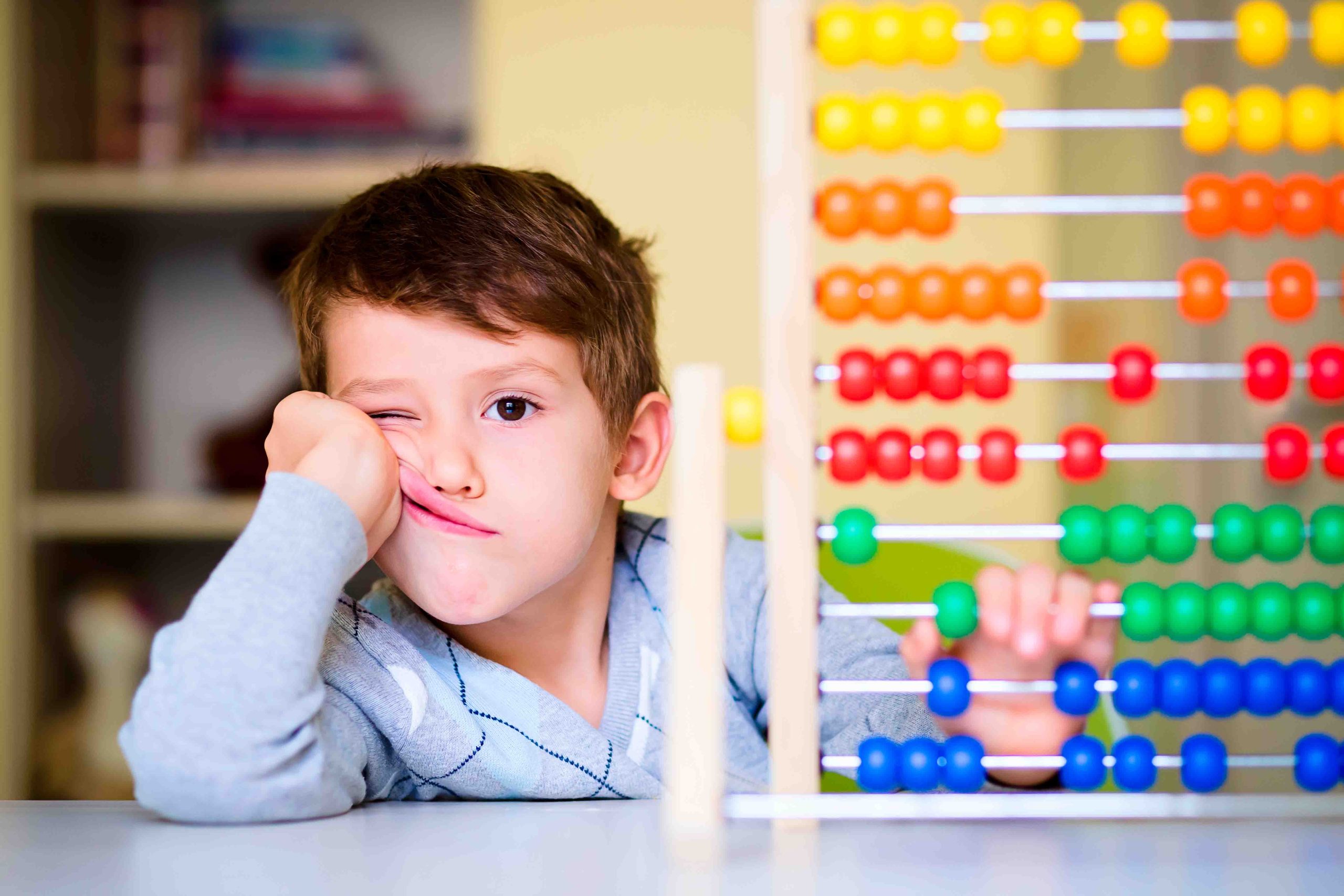The Impact of Sleep Deprivation on Mental Health
How many hours do you sleep each day? How would you describe the quality of your sleep? In today’s contemporary world, we navigate through lives dictated by increasingly hectic schedules, surrounded by an environment overloaded with information and stimuli. Messages advocating for productivity and performance, at times detached from context and treated as an end in themselves, proliferate on social media and in the mainstream. As South Korean philosopher Byung-Chul Han highlights in his work «The Burnout Society,» the 21st-century society has shifted from being disciplinary to becoming performance-oriented. Amidst the deluge of information, the implicit and perpetual pressure to enhance «productivity,» and various factors influencing our sleep hygiene, among others, insufficient sleep is recognized as a «silent epidemic,» impacting the lives of millions. Globally, 62% of adults report unsatisfactory sleep. In Spain, as per data from the Ministry of Health, sleep disorders affect 50.6% of men and 58.1% of women. Furthermore, Spain leads in the consumption of benzodiazepines, commonly used to induce sleep.
These statistics indicate a significant issue in our society, extending beyond mere sleep deprivation. Sleep is entangled in numerous processes crucial for overall well-being, encompassing both psychological and physical health. Persistent sleep deprivation is linked to an elevated risk of diverse health issues.
Why Do We Sleep?
It is common to perceive sleep as a period of complete inactivity, where the body and brain «shut down» until we awaken. However, in reality, during these hours of rest, the brain (along with the rest of the body) undertakes several crucial functions. For example, sleep encompasses processes related to memory consolidation and the drainage and elimination of specific toxins and proteins that accumulate throughout the day (some associated with Alzheimer’s disease). In general, during these hours, our body initiates actions aimed at rest and the «repair and maintenance» of all systems. Therefore, consistently neglecting these needs raises the associated risks and their impact on various aspects of our health.

Sleep Quality
Regarding sleep quality, there are three elements to consider: duration, which should be sufficient to feel alert and rested during the day (in the adult population, it is estimated that this time should be between 7 to 9 hours); sleep continuity, as sleep periods should be continuous without interruptions or fragmentation; and depth, as sleep should be deep enough to be restorative.
Lack of Sleep
Scientific evidence supporting the detrimental effects of sleep deprivation is extensive. According to the American Psychological Association, individuals with sleep disorders are significantly more prone to developing psychological and physical problems. Numerous studies indicate that people experiencing insomnia have a heightened risk of developing various psychological issues, including depressive disorders and problems related to anxiety and stress (Baglioni et al., 2013).
Furthermore, research suggests that Rapid Eye Movement (REM) sleep, the stage where the most vivid dreams occur, plays a crucial role in emotion regulation. A 2015 study published in the «Journal of Neuroscience» proposes that the disruption of REM sleep can amplify emotional reactivity and contribute to mood disorders (Vandekerckhove et al., 2015).
Other research focuses on how sleep impacts the activity of the hippocampus, a brain region involved in processes related to encoding and consolidating memory.
It would be impractical to delve into all aspects of health affected by a lack of sleep. In this article, we will concentrate on the cognitive and psychological aspects most susceptible to insufficient sleep or poor-quality sleep.
If you are currently not getting enough sleep or experiencing poor sleep, you probably notice that all those fundamental cognitive processes that enable us to face everyday situations begin to function poorly, even after just one night of insufficient sleep. From alertness to memory processes, and the regulation of emotions, almost all our abilities start to function less effectively.

Functions affected by lack of sleep
- Processing Speed and Response Time: We become slower. Lack of sleep is associated with psychomotor slowing, making us feel slower, clumsier, and creating significant difficulty in facing the day.
- Alertness, Attention, and Concentration: Attention is the "first gate" of our cognitive system. Sleep affects our ability to stay alert, focus our attention, and sustain that attention in any activity. Maintaining a conversation, reading, cooking, concentrating in class or at work, or simply engaging in leisure activities can become very frustrating tasks.
- Executive Functions: Getting little or poor-quality sleep affects our ability to plan a series of actions directed toward a specific goal, the ability to inhibit responses or distractions, and our ability to retain the information needed to perform a task. We feel much less "agile," and it is more likely that we may even forget what we were doing.
- Creative and Innovative Thinking: Creative, divergent, and innovative aspects of cognition are greatly affected by a lack of sleep. Imagining, generating, and implementing different response alternatives to a problem (what we call problem-solving) can be severely impacted.
- Sleepiness and Involuntary Microsleeps: Falling asleep involuntarily can pose a significant risk, especially when it happens during activities like driving or tasks with potentially dangerous circumstances (handling machinery, etc.).
- Memory: The ability to retain information and access it, as well as the consolidation of memories (closely related to sleep), is similarly affected.
- Irritability: Our way of behaving, perceiving what we feel, and responding to situations is also affected. Irritability is usually evident: after a bad night or poor sleep, everything seems worse, and we are more prone to react with greater impulsivity and irritability.
- Long-term Health Risks: Sustained lack of sleep is related to health problems, affecting the immune system, cardiovascular system, diabetes, obesity, migraines, and psychological problems such as depression or anxiety, among many other areas of health. Poor sleep affects the entire body and all areas of daily life.
Tips for Better Sleep
If you’re having trouble sleeping, learning about its importance and the potential consequences can be frustrating. It’s neither beneficial nor necessary to be alarmed; instead, take action to analyze your specific situation and identify gradual improvements.
There are some simple measures that can enhance your chances of experiencing a good night’s rest, and you can certainly find many tips online. However, online advice can only offer general recommendations that may not be suitable or entirely tailored to your situation. Therefore, the primary recommendation is to consult with a healthcare professional and consider undergoing a specific sleep study that analyzes various variables while you sleep. Psychologists focus on the behavioral aspect, including thoughts, your learning history, and current variables that may be maintaining the problem, to create a plan that can maximize the chances of gradually improving your sleep. One of the factors most related to a lack of sleep, especially the ability to fall asleep, is stress. Going to bed with worries, attempting to deal with those thoughts, and ending up in a spiral from which it is difficult to escape constitutes a vicious circle that generates an alert response during which it is almost impossible to fall asleep.

Treatments exist for many common sleep disorders. Cognitive-behavioral therapy can help many people with insomnia sleep better, and some medications can also be useful in specific situations. Other problems such as sleep apnea (interrupted sleep due to respiratory difficulties) benefit from the use of a specific device (CPAP machine) that improves rest by keeping the airways open. Therefore, it is always advisable to consult with a healthcare professional to rule out organic problems not related to lifestyle or other psychological variables.
On the occasion of World Sleep Day, the World Sleep Society has compiled two sets of recommendations (one for adults and one for children) with tips for achieving healthier sleep. Here are some of them:
- Set a fixed time to go to bed and wake up.
- If you take naps, they should not exceed 30 minutes.
- Avoid toxins such as alcohol and tobacco.
- Avoid caffeine six hours before bedtime.
- Try to have light dinners.
- Exercise regularly, but it should be avoided in the evening. The optimal time for exercise is in the morning and ideally outdoors.
- Use comfortable bedding.
- Find a comfortable sleeping temperature and keep the room well-ventilated.
- Block all annoying noises and eliminate as much light as possible.
- Use the bed only for sleeping or having sexual relations.

Furthermore, exposing oneself to natural light in the mornings can promote the proper functioning of circadian rhythms that our body relies on to regulate alertness and vigilance levels. When we wake up and perceive light, the body ceases to generate melatonin, a hormone heavily involved in sleep-wake cycles, signaling to our body that it is time to sleep. This is why it is also recommended to establish a pre-sleep routine that avoids screens or other sources of light, signaling to our brain to start preparing for rest. The same principle applies to caffeine, which hinders us from perceiving the feelings of tiredness that aid in falling asleep.
Once again, while these tips may be helpful, if you feel that lack of sleep has a significant impact on various areas of your life, it would be highly advisable to consult with a healthcare professional who can help you conduct an analysis tailored to your circumstances. Considering all the functions affected by lack of sleep, it is worth addressing it as a priority: improving your sleep quality may lead to a noticeable improvement in aspects you may not have associated with the quality of your sleep.
Abouth the author
Alejandro Sancha is a General Health Psychologist and Clinical Neuropsychologist. He also has a postgraduate degree in child and adolescent psychology. He has experience with various psychological problems (anxiety, mood disorders, stress, ADHD, rehabilitation in acquired brain injury, among others) and works from an evidence-based perspective. His passion for understanding human behavior led him to dedicate himself to the clinic, being very important for him that his clients feel comfortable from the beginning, understanding how their discomfort originates and how it is maintained today, in order to generate the necessary tools that allow them to achieve the greatest possible well-being in their lives.
Division of Psychology, Psychotherapy and Coaching
Psychologist
Children, adolescents and adults
Languages: English, French and Spanish
Navigating the Social Media Landscape: Balancing Well-being in a Digital Age
The use of social networks and their impact on mental health has been widely discussed in recent years. In this article, we will explore the use of social networks, their relationship to psychological well-being, and discuss strategies to engage in a more conscious and satisfying use of them.
Social media has become an integral part of our daily routine. Just yesterday, I was talking to a family member who, before visiting a city, had discovered various places and activities through TikTok videos. Social networks are not merely for «socializing»; they serve as a primary source of entertainment, resources, ideas, and information, showcasing the «best side» of the lives of those around us. Nowadays, it seems that if you don’t have social media, you are either a hermit or an alien.
The scientific literature has seen extensive discussion on whether the use of social media has positive or negative effects, its potential for addiction, and the media often portrays it in a sensational and alarming manner. The reality is that, as is often the case, scientific evidence does not provide absolute conclusions on the matter. To assess whether social media truly has negative effects, an in-depth study of each individual case is necessary. However, we can observe some general trends that can guide us in making a more conscious use of these platforms.

Your attention is the currency
Today, it’s no longer a secret: social networks thrive on the attention you give them. That’s why they are meticulously designed to:
- Prompt you to open the application as frequently as possible.
- Keep you engaged with the screen for as long as possible.
- Encourage interactions with other users/content to attract more people to the platform.
The goal is to gather extensive information about you to construct a profile, including your political orientation, preferences, hobbies, age, gender, and interests. This allows social networks to deliver «tailored» content and advertising. The content and ads you see will be finely tuned to you, presenting significant value to advertisers looking to promote on these platforms. The more you engage with social networks, the more insights they gain about you, and the longer you use them, the more advertisements you’re likely to encounter.
This implies that all these social networks, typically considered «free» for users, have perfected every conceivable technique to be exceptionally appealing. From the color palette and icon design to the notification sounds and the «gestures» and buttons during usage, every minute detail of the user experience and interface is meticulously crafted to captivate and retain your attention.

The two faces of social media:
Given these characteristics and the increasing use across all age groups, it is not surprising that there is a growing concern about social networks, especially in adolescence. The reality is much more nuanced than the typical portrayals in the media: they are neither inherently evil nor an unequivocal marvel of socialization.
The scientific literature on the subject often presents contradictory conclusions, emphasizing that the relationship between social network use and mental health is, in fact, complex and multifaceted, involving several contributing factors. Some aspects associated with excessive use of social networks that can impact mental health include:
- Anxiety and depressive conditions
- Addictive behaviors (excessive dependence on devices and significant discomfort in their absence)
- "Fear of missing out" (anxiety about missing social events or experiences that others are having) Social isolation
- "Phubbing" (an Anglo-Saxon concept referring to ignoring a person by paying attention to the cell phone).
- Body dissatisfaction
However, other studies highlight the positive aspects of social networking, including:
- A sense of belonging and social connection
- Access to communities with shared interests
- Access to support networks
- Simple and quick communication that can enhance relationships with friends and family members
- A source of resources, information, and advice
- Maintaining social relationships over distances

These represent just a few of the dual aspects of social networking. It is common in the media and even in everyday conversations to attempt to simplify a complex reality, presenting a «caricature» of what social networks are in one sense or another. Yet, as is typical in psychology, it all depends. It depends on the manner in which networks are used, the purpose they serve, the discomfort they may generate, and the interference they cause in various aspects of an individual’s life, among a multitude of other variables.
But on one thing, we can agree: owing to the way they are designed and the strong social component of these networks, many people aspire to make a more conscious use of these applications and reduce the time spent on them. In fact, numerous individuals seek consultation with complaints about their attention, lack of ability to concentrate, and «dependence» on certain social networks. Let’s explore some strategies to attempt to achieve this.
Social Networks: Achieving Conscious and Satisfactory Use
Ideally, we should aim to retain as many positive aspects as possible while minimizing the negative impact that social networks can have on us. Many people strive for this balance, often relying excessively on sheer «willpower» or motivation. However, it’s crucial to recognize that motivation is something we need to cultivate actively, not something inherently within us. Therefore, let’s construct that «motivation» by shaping our environment, recognizing that we are in competition with applications expertly designed to «hook» us.
How to Modify Your Environment (Physical and Digital) to Reclaim Your Attention:
Setting Digital Boundaries:
- Establish specific times for checking your emails, social media, and other apps.
- Disable notifications that are unnecessary or irrelevant to you.
- Utilize apps or native device features to automatically limit usage time, and consider activating "night mode." If your device offers automatic settings, you won't have to pause and think about it.
- Explore the "screen time" feature in your device settings. Once you are aware of your app usage, decide what changes you want to make and what you want to retain.
Adopt "Digital Minimalism":
- Organize your screen to make accessing apps "less obvious and automatic." You can achieve this by creating folders, relocating icons from your main screen, or using monochrome filters (yes, phones can be set to black and white) during times when you aim to limit distractions.
- Delete or uninstall apps you no longer wish to use (remember, you can always download them later).
Screen-free Spaces:
- Create designated spaces without screens or devices, such as when you're with friends, studying, or working on a project.
- Keep your cellphone out of your room while you sleep (consider using an analog clock or alarm).
- Avoid placing your cellphone on the table or in sight when engaged in conversations with others.

Educate Your Algorithms:
- Prioritize content deliberately by giving "likes" to material that interests you, encouraging similar content suggestions.
- Click "not interested" for content that you dislike or find distracting.
- Consider creating a new account focused on specific content related to a particular area or topic.
Prioritize "Offline" Activities:
- Schedule activities or hobbies in advance to avoid making decisions in the moment and potentially getting lost in endless scrolling.
- Mark these activities in your calendar or note apps, placing them on your main screen for easy access.
- Identify places and moments associated with mobile or network use to raise awareness and modify those spaces or choose not to bring your mobile device to those locations.
In conclusion, endeavor to reshape your environment, making it slightly more challenging to access what you aim to avoid while fostering behaviors that hold value in your daily life. Relying solely on our «willpower» may not be sufficient to cultivate awareness of our device usage and contend with the myriad distractions vying for our attention. By strategically modifying our surroundings, we empower ourselves to navigate the digital landscape more consciously and regain control over our attention in the face of formidable competitors.
About the author:
Alejandro Sancha is a General Health Psychologist and Clinical Neuropsychologist. He also has a postgraduate degree in child and adolescent psychology. He has experience with various psychological problems (anxiety, mood disorders, stress, ADHD, rehabilitation in acquired brain injury, among others) and works from an evidence-based perspective. His passion for understanding human behavior led him to dedicate himself to the clinic, being very important for him that his clients feel comfortable from the beginning, understanding how their discomfort originates and how it is maintained today, in order to generate the necessary tools that allow them to achieve the greatest possible well-being in their lives.
Division of Psychology, Psychotherapy and Coaching
Psychologist
Children, adolescents and adults
Languages: English, French and Spanish
The importance of supporting the mental health of expatriates
We all live within various systems that, throughout our lives, shape who we are and how we behave. These systems encompass the verbal community around us, its customs, language, the physical context with its characteristics (political, religious, cultural organization, etc.), infrastructure, and even the climate, all of which influence the environment where we feel comfortable. Additionally, we form a social circle that provides support, contributing significantly to our well-being and sense of belonging.
Relocating is already one of the most stressful events in a person’s life, and when the move is international, it can have an even more significant impact on the pillars of our lives, disrupting the systems that help us navigate our environment satisfactorily.
In this article, we will explore some of the challenges faced during expatriation, as well as strategies to facilitate a smooth adjustment to the new environment.
Psychological Impact of Expatriation
The business world has undergone profound changes in recent decades. In the era of globalization, employees must increasingly adapt to different cultures (Caligiuri, 2013). Expatriation has seen a dramatic increase (Brookfield, 2015), sparking psychology’s interest in understanding the potential challenges people face when working abroad and adjusting to a new environment.
Expatriation, or international relocation, presents numerous psychological challenges that should not be underestimated. Culture shock, separation from family and support systems, adaptation to new rules and values, and the need to establish a new sense of belonging can lead to high levels of stress, anxiety, and feelings of isolation. These factors can, in turn, result in issues such as poor adjustment to the host country (Harari, Reaves, Beane, Laginess, & Viswesvaran, 2018), reduced work performance (Kawai & Strange, 2014), difficulties in dealing with culture shock (Okpara, 2016), or a negative impact on overall well-being (Kempen et al., 2015).

Phases of cultural adjustment:
- Anticipation: The initial stage begins before departure. Excitement, curiosity, and anticipation are mixed with anxiety and the apprehension of the unknown. The thought of leaving behind familiar surroundings and friends can create a mixture of emotions, which can sometimes be uncomfortable.
- Honeymoon: Upon arrival at the destination, the "honeymoon" phase often begins. The novelty and variety of experiences are often enjoyable and intense. New surroundings, social connections, and cultural experiences provide a sense of adventure that is highly rewarding. This phase is often characterized by enthusiasm, fascination, and wonder.
- Culture Shock: As the novelty wears off, people may experience culture shock. The language barrier, customs, social norms, and daily routines can create feelings of frustration, confusion, and homesickness. The familiar and known may be missed, and the challenges of adapting to the new culture can lead to a sense of isolation and disorientation, which intensify over time.
- Adjustment: Gradually, individuals begin to adapt and integrate into the host culture. They develop coping strategies, sometimes acquire linguistic knowledge, and establish social ties with local people and expatriate communities. This stage involves a learning process and an understanding of cultural nuances, which helps individuals feel more comfortable and confident in the new environment.
- Adaptation: In this phase, people become more comfortable within the host culture. They develop a deeper understanding and appreciation of local customs and traditions. Confidence increases, and a sense of belonging may emerge as people navigate their lives with greater ease, forming meaningful relationships and embracing the new lifestyle.
- Repatriation: For those who eventually return to their country of origin, repatriation can be another significant step. Rejoining a familiar environment can bring its own set of challenges, as individuals may go through another phase of readjustment to their home culture while experiencing the effects of reverse culture shock.
It’s important to note that each individual’s experience is unique and influenced by factors such as personality, learning experiences, support networks, and the specific context of the expatriation.

How is the process
In the face of these significant changes, if the imbalance between the «pleasurable» aspects we leave behind and the «unpleasant» aspects that emerge in the new destination is too significant, we may begin to feel worse and tend to avoid seeking stimuli that would enable us to adapt and enjoy our new home.
There are countless «reinforcers» that we lose when leaving, such as physical closeness to loved ones, the comfort provided by familiar customs (food, rules, habits, and social interactions like «going out for a drink» after work), sports or hobbies, cultural activities in your language, assistance during administrative procedures, and friendships that deteriorate, among others. On the other hand, there are many factors that can create «friction» when engaging in activities, making it difficult to leave the house and leading us to avoid certain situations. These factors include the loss of references such as currency value, knowledge of prices and products we typically purchase, complete unfamiliarity with local places or available activities, language barriers, and more.
Faced with the loss of reinforcers and the increase in friction or «unpleasant aspects,» avoidance behaviors may emerge, leading to inactivity, spending more time at home, and reminiscing about how «good things were before» and how uncomfortable we feel in the new place.
However, these avoidance patterns only perpetuate sadness or frustration, without helping us «balance» the pleasurable and unpleasant aspects of relocation. All of this can lead to a negative perception of everything related to the host culture, generating an almost automatic rejection of the place, the new job, customs, and life in general.
Therefore, we must consciously make an effort to stay active and create a new «catalog of reinforcers» that allows us to maintain a positive state of mind, develop a sense of belonging, and truly feel at home in our new environment.

To achieve this, it is advisable to plan visits to the new city and its surroundings, try out local restaurants, activities, and stores that can become our new references, explore pleasant outdoor places, and become familiar with the areas near work and home. Having social support, whether from a local person or someone who deeply understands the culture, can be very helpful. Learning about customs, phrases, or basic words for daily interactions is an excellent way to bridge the gap with the new place and gradually feel more comfortable.
Here are some recommendations to help you adjust to your new destination:
- Pre-departure Preparation and Education: Learning about the culture, language, and customs of the new country before the move can reduce culture shock and set realistic expectations.
- Support Networks: Maintaining contact with friends and family from your home country and establishing new connections in the host country is crucial. Support networks can offer emotional comfort and reduce feelings of isolation. Exploring expat communities can be valuable, as these individuals have likely experienced similar situations and can provide advice and recommendations to help you feel more comfortable. However, establishing social ties with local people is also rewarding and can last a lifetime.
- Flexibility and Tolerance: Being open to adaptation and accepting cultural differences without judgment can facilitate integration into the new environment. Keep in mind that your familiar systems may lead you to find some situations "unacceptable" or surreal when compared to your own frame of reference. Try to adopt a neutral perspective and seek to understand why certain things are done a certain way by asking and talking to locals and fellow expats.
- Seek Professional Support: Dealing with emotional challenges is not a sign of weakness. In the face of these changes, seeking help from a psychologist or therapist can provide tools to cope with stress and anxiety.
- Exploration and Adventure: Instead of isolating yourself, seek out new experiences and activities to increase your sense of control and familiarity with the new environment.
- Maintain Virtual Connections: Today's technologies allow for close connections with friends and family back home, which can alleviate feelings of isolation and homesickness.
- Self-Care: Maintaining self-care habits, such as a balanced diet, regular exercise, and sufficient rest, can positively impact mental health.
- Engage with Resources from Your Home Country or Culture: Regardless of your background, there are likely associations, clubs, or groups (often accessible through social media) that can provide a sense of familiarity and comfort. Don't forget to contact your embassy, which probably offers resources and cultural events in your host country.

The expatriation experience is a challenging journey that significantly impacts one’s mental health and emotional well-being. As we venture into new places and cultures, we embark on an emotional journey that takes us through various stages, from anticipation to adaptation, and ultimately, the search for a new sense of belonging.
In the midst of uncertainty and change, it’s essential to remember that emotional growth and adaptation are individual processes. There’s no one-size-fits-all recipe for expatriation success, but with a combination of flexibility, continuous learning, and both personal and professional support, it’s possible to find a new sense of home and balance in a foreign environment.
If you’re in the process of expatriating, remember that you’re not alone on this journey. Whether it’s a quest for new adventures, career opportunities, or a life change, there are tools and resources available to support you every step of the way. Adaptation is a gradual process, and with patience and a support network, you can find your place in this new reality.
About the author
Alejandro Sancha is a General Health Psychologist and Clinical Neuropsychologist. He also has a postgraduate degree in child and adolescent psychology. He has experience with various psychological problems (anxiety, mood disorders, stress, ADHD, rehabilitation in acquired brain injury, among others) and works from an evidence-based perspective. His passion for understanding human behavior led him to dedicate himself to the clinic, being very important for him that his clients feel comfortable from the beginning, understanding how their discomfort originates and how it is maintained today, in order to generate the necessary tools that allow them to achieve the greatest possible well-being in their lives.
Division of Psychology, Psychotherapy and Coaching
Psychologist
Children, adolescents and adults
Languages: English, French and Spanish
Depression and Anxiety: When to Seek Psychological Help
As for any psychological difficulty, «depression and anxiety « are labels we use to describe a range of symptoms and circumstances that a person may go through in their lifetime. At some point you may wonder whether you should seek psychological help, or whether what you are feeling is «normal» or not. These are common questions that we all ask ourselves in certain circumstances, and in this article we will discuss some aspects that may help you understand a little better what we mean by depression and anxiety, and perhaps encourage you to seek help if you need it.
We will first look at what we mean by depression and anxiety, and we will talk about the signs that might indicate that it is a good moment to seek psychological support.
What are depression and anxiety?
Depression and anxiety are two words that we use to describe a particular set of circumstances that occur together at a particular time. It seems obvious, but generally starting out by clarifying this helps me communicate what diagnostic labels are.
When we talk about «mental disorders» or «mental illness,» we generally tend to view these problems as «entities» or internal phenomena. This can lead us to feel guilt or frustration, as well as resistance to change, since by seeing it this way we assume in part that the «cause» of what is happening to us lies within us, and we must «cure» it. But we shouldn’t forget that people are in constant interaction with their environment, and that it is generally within this interaction that we find the cause of what we experience.

We are individuals in perpetual learning, and many of the strategies we learn may be useful for dealing with a situation in the short term, but may not be as useful and effective in the long term, and therefore we end up sustaining a general discomfort in our lives if we are not really aware of it. An example of this is avoiding something that makes us anxious: avoiding the situation brings us great immediate relief and peace of mind, but in the long run it is very likely for that anxiety to increase and be maintained over time. This dilemma between the consequences of our actions in the short and long term is the basis of many psychological problems.
Many people, assuming that the problem is nothing more than a «chemical imbalance in the brain», focus mainly on pharmacological treatments or talk about «curing» this disorder, sometimes ignoring all the strategies that we can implement when we discover all the elements that are involved in our behaviors. And that is the goal of psychology: first analyze what originated the problem, what is maintaining it, and set out to act directly on those variables and generate a change that will lead us towards psychological well-being through all the tools learned along the way.
There are not two depressed people with identical symptoms, just as there are not two people whose anxiety is due to exactly the same causes. They are labels that we use to summarize and communicate the things that are happening to us, and they can be useful to somewhat alleviate uncertainty, alleviate our concern, and as a good method of communication between professionals, but we need to examine your particular situation and circumstances in order to generate the desired change.
That being said, let’s look at what we generally understand by depression and anxiety:
Depression
Depression is described as a mood disorder characterized by a profound sense of sadness, hopelessness and lack of interest or pleasure in everyday activities. This inability to experience pleasure or interest is known as anhedonia, and is one of the most common aspects of depressed people. This anhedonia is then generalized to all areas of life, making it increasingly difficult to get out of the situation, in a kind of downward spiral in which the vision of oneself, the world around us, and the future, is increasingly pessimistic.
Other very common symptoms in depressed individuals may include the following:
Symptoms
- A general decrease in energy.
- Significant changes in appetite and weight.
- Difficulties with sleep (insomnia, difficulties falling asleep).
- Cognitive difficulties (problems with attention, concentration, memory).
- Feelings of guilt or worthlessness.
- Recurrent thoughts about death, self-injury.

Anxiety
On the other hand, anxiety is characterized by intense feelings of worry, fear and nervousness. It is a subjective experience that varies in intensity and can manifest itself physically, cognitively and emotionally in a variety of ways. Depending on its characteristics it is often classified into various categories, such as generalized anxiety disorder (GAD), panic disorder, post-traumatic stress disorder (PTSD), phobias or social anxiety disorder, among other diagnostic labels.
It is a common experience that we all go through at some point in our lives, and is actually a natural response of the body to situations of danger or stress. However, when anxiety becomes persistent, overwhelming and interferes with daily functioning, it can become a very disabling problem.
Generally, the following symptoms are included when we talk about anxiety:
Symptoms
- Physical symptoms: palpitations, shortness of breath, muscle tension, sweating, shakiness, gastrointestinal discomfort, and chest "tightness" or "lump in the throat" related symptoms.
- Cognitive symptoms: excessive worry, rumination about thoughts with low sense of control, difficulty concentrating, catastrophic thoughts, and difficulty making decisions.
- Emotional symptoms: constant restlessness, marked irritability, feeling constantly "on edge", excessive sensitivity, intense fear and feeling of loss of control.
- Behavioral symptoms: Avoidance of feared situations, excessive safety or verification behaviors, difficulty sleeping, restlessness or social withdrawal.
As you can see, some of the symptoms associated with anxiety and depression «overlap». Going back to the idea of diagnostic labels, we rarely find a situation in which a person presents symptoms of a single diagnostic category… And this is not surprising, since as we have seen these categories serve among other things for grouping a series of symptoms and thus facilitate diagnosis, treatment and communication between professionals. But in no case are they » sealed categories» and the human experience is too complex to be reduced to one of these categories, so that in almost all cases you will experience symptoms that can be attributed to several labels.
When do we refer to a disorder, and when should we consult a psychology professional?
On many occasions, you may feel identified with many of the symptoms that we have exposed above. But this does not mean that it is not «normal» (we should also discuss what normal means), and this does not automatically mean that we are talking about a disorder. The emotions we experience are generally a response to events that happen around us, and all of them are helpful in some way. When we lose a loved one, it is not uncommon to experience deep feelings of sadness, changes in appetite, and a general lack of motivation and interest in things. We may also feel nervous and irritable and feel all those physical symptoms associated with anxiety. And although these symptoms are associated with depression and anxiety, this does not mean that we have a disorder, but rather we can associate them with a grieving process.
But then, when do we call it a disorder?
The main idea here is that the symptoms you experience, whatever they may be, entail an impairment in important areas of your life. When you feel that what is happening to you is significantly interfering with your family life, your academic or professional life, your personal life, your social life, and/or other aspects of your life in general, and you feel that the strategies you implement are not enough to change how you are feeling, and in addition the situation is sustained over time, we could start considering a psychological problem.
Once again, the key is to be able to make a very personalized study of your life history, your current circumstances, and the function that these symptoms and behaviors play in your daily life, as well as the factors that are maintaining them.
However, it is not necessary to wait until these symptoms become generalized and are at the point where they interfere with your daily life. You can actually consult a psychology professional at any point in the process: at the beginning of a grief, when you feel that you feel something that you do not understand very well, when you see that your anxiety, although not generalized and prevents you from doing certain things, is bothering you and you would like to work on it… or even if you do not feel a great distress but you want to change something or learn to develop some habit or understand something about yourself and your behavior.

Your psychologist will conduct a complete assessment to help you understand all the variables that trigger and maintain your problem, and will develop a plan to make some changes that will allow you to better understand why you are experiencing what you are experiencing, and to progressively adjust it. In addition, if necessary, they will work hand in hand with a psychiatrist to combine pharmacological strategies if in your particular case you need it. The goal of both is to provide you with all the possible tools to understand what is happening to you and to achieve psychological well-being as soon as possible.
In the end, a psychologist is a behavioral specialist, including emotions and thoughts, and you may find it very interesting to visit them at any point in the process you are going through.
Anxiety and depression are two diagnostic labels that allow us to describe a series of symptoms that generally occur together. Depression refers to a deep feeling of sadness, an inability to feel pleasure, and a general decrease in activity with changes in appetite, sleep and cognitive abilities. Anxiety, on the other hand, refers to great activation, nervousness and worry, often related to anticipation of future events. If these symptoms begin to interfere with various areas of your daily life, it would be very positive to see a professional psychologist to understand the mechanisms that are maintaining them and how to change them, and if necessary, work in tandem with a psychiatrist to assess the suitability of medication in your particular case. However, it is not necessary to wait until this point, since seeing a psychologist beforehand can help you acquire more tools and prevent this impact on your daily life.
About the author
Alejandro Sancha is a General Health Psychologist and Clinical Neuropsychologist. He also has a postgraduate degree in child and adolescent psychology. He has experience with various psychological problems (anxiety, mood disorders, stress, ADHD, rehabilitation in acquired brain injury, among others) and works from an evidence-based perspective. His passion for understanding human behavior led him to dedicate himself to the clinic, being very important for him that his clients feel comfortable from the beginning, understanding how their discomfort originates and how it is maintained today, in order to generate the necessary tools that allow them to achieve the greatest possible well-being in their lives.
Division of Psychology, Psychotherapy and Coaching
Psychologist
Children, adolescents and adults
Languages: English, French and Spanish
Adult ADHD: What is it, how to work with it and how can psychology help you
Attention deficit hyperactivity disorder (ADHD) is a disorder that is often associated with childhood. However, many adults continue to show attention deficit-related signs and symptoms that greatly interfere with activities of everyday life and even deteriorate their self-esteem and psychological health. In this article we will look at what ADHD is and discuss how to mitigate its impact on daily life.
Our brain only has limited resources to perceive and process the world around us, and nowadays we live in environments that are overloaded with stimulation and information. We have to cope with an infinite number of demands: work, leisure, social life, personal life, partners, children… in addition to a myriad of self-imposed rules that can sometimes overload our cognitive capacities. We also have a significant social pressure towards productivity, in which it seems that if you don’t do anything with your free time you are wasting it or not taking advantage of your life to a 100%.
I don’t know about you, but personally I find it more and more difficult to get myself to carry out complicated tasks or tasks that require concentration for long periods of time. There always seems to be something better to do, something more urgent, or distractions that prevent me from doing that deep work that brings me closer to achieving my goals.
In this context of information overload, there are more and more communication channels and entertainment media based on immediate gratification. In almost all media and platforms, the consumption of ever shorter and faster content is encouraged, and our attentional capacities are progressively being reduced: it is increasingly difficult to focus on a task, to stay organized, and to avoid the distractions that are bombarding us from all sides.

A study conducted in Canada showed that people’s average attentional span went from 12 seconds in 2000 to 8 seconds in 2015. The concept of the «goldfish effect» appeared, comparing our attentional span to that of a goldfish. We live in an increasingly distracted world, in which the most precious resource, your attention, becomes the most important currency.
It is not surprising that, more and more frequently, people with a poor self-concept related to their «lack of motivation», «lack of concentration», «lack of organization», «lack of productivity» or similar concepts come for counseling.
What is ADHD?
Like any diagnosis, attention deficit hyperactivity disorder (ADHD) is a label that is applied to people who meet a certain set of signs and symptoms. In general, we consider certain subtypes within ADHD: the inattentive, the hyperactive/impulsive, and the combined.
Although it tends to be associated with childhood, partly due to the prevalence of hyperactivity in the younger ones, many adults experience difficulties related to inattention, organization and planning, which entail great difficulties in their daily lives. These are just some of the symptoms that can occur in people with a diagnosis of ADHD.
Inattention-related:
- They are very easily distracted
- Difficulty sustaining attention during an activity
- They frequently misplace important objects
- Problems with time perception and organization
- Difficulty in both planning the necessary steps to a goal, and following through on that plan.
- Procrastination .
- They often do not pay attention to detail, and thus make frequent errors or omissions due to inattention.
- Difficulty in completing projects/activities in which they are involved (even in their personal life).
- They lose the thread of conversation or appear not to listen
- They avoid tasks that require cognitive effort

Related to impulsivity/hyperactivity:
- They reply or complete sentences before others finish. They interrupt conversations
- Difficulty waiting for turns, or standing in lines.
- Impulsive decision making
- They feel like a "running engine" that is difficult to stop
- Difficulty sitting still or remaining seated in situations that require them to do so

In sum, a person diagnosed with ADHD usually faces problems related to inattention that make it difficult for them to sustain a continuous level of effort, to know when to start and stop their actions, problems with procrastination, with the management of their tasks or personal life, a tendency to be impulsive (among others), which generate great difficulties in almost any area of their life.
And these problems do not only affect their work or their projects: They eventually find it difficult making friends and maintaining friendships, keeping a job, finding a long-term partner, and even regulating their emotions, all of which ends up creating a sort of vicious circle that is difficult to escape from.
Certainly, such difficulties end up being perceived as a personal failure and a lack of motivation or the well-known «willpower» that creates an immense distress. Many adults who are diagnosed with ADHD have grown up with comments such as «he/she is very lazy», «he/she is daydreaming”, «he/she is in his/her own world», «he/she is absent-minded» which, after being repeated over time, are internalised and become part of the self-concept.
But what if I told you that the root of all these difficulties lies more in your environment than in your brain?
How to Improve Attention and ADHD Symptoms
Very often people who are diagnosed with ADHD think that because their brain works differently, they will not be able to improve their attention/motivation/memory in any way, or that there is nothing to do but use prescription drugs. While medication can be a great help (always consult your psychiatrist), we have a lot of room to improve our quality of life, our productivity, and ultimately our self-esteem, through the environments in which we live.
Just think about it: We live in environments (virtual and non-virtual) that are carefully designed to facilitate some behaviors and prevent or reduce many other behaviors.
- When you go to a supermarket, and you see that the bread and ready meals are at the back, is it perhaps to encourage you to buy other products on the way, even if you only need a loaf of bread?
- When you use social media and the algorithms display more and more content that is tailored to your preferences, could it be to keep you in the app longer, and display more ads?
- When you drive and see traffic signs, aren't they to favor or reduce certain behaviors?
- Casinos that have no windows or clocks, is it perhaps to reduce time perception and make players spend more money?
These are only a few common examples. Most definitely, the whole world around us is generally designed by other people, and there are certain cues that indicate that if we do «x» thing, it might have more or less pleasant consequences, and therefore we tend to do it more often or less often.

And this is how ( in a very simplified way) we can try to improve how our attention and disorganization problems affects our daily life: by learning about your specific challenges, and taking control over the design of your environment, creating systems that make some things easier for you, and others more complicated. In this way, along with some training that allows you to build better planning skills, better time management skills, and a better understanding of how the habits we want to build arise and are maintained, you start gradually gaining control and decision-making power over the things you do.
The first effect of doing this, and perhaps the most important one, is the realization that in general it is not «us» who «have a lack of motivation» or «willpower». To become aware that psychological problems in general are not like a disease we have inside that makes it impossible for us to do certain things, but that it is rather the system in which we are immersed that makes things more difficult (or easier) for us. We are individuals in constant interaction with different environments (physical, social, cultural, etc.), and it is in that interaction that we can take action.
This first step is tremendously important, as it can help us alleviate some of the guilt and discomfort related to our self-esteem: we change the focus from «I am good for nothing», «I can’t finish anything», «I am lazy» to «What can I improve in my system so that I have less trouble doing this?» «What specific actions can I implement in my daily life to try and improve this situation»… And this is a major step forward.
The second step is putting our hands to work: becoming increasingly aware of how, when, and where are those «stimuli» that trigger our behaviors, and how the consequences of our actions either favor or decrease the likelihood of us doing the things we want to do.
Once we have made this thorough analysis of our habits, our routines, the systems we use to manage our time and our projects (work, family, personal, etc.) we will have much more information on how to try and modify them. Thus, we become the «designers» of our own environments (both virtual and non-virtual) and we will have many more tools to get closer to the type of person we want to be, and act in a way that is more in line with our values.
How can a psychologist help you reduce the symptoms of ADHD?
Psychology is the science of behavior: psychology professionals are therefore experts in the study of how certain psychological problems arise, how they are maintained over time, and the necessary techniques to modify them and reduce your discomfort.
Together with you, your psychologist will make a thorough analysis of your current situation (which goes far beyond the ADHD label), in order to create a «tailor-made study» of the difficulties you are experiencing in your daily life.

After that first assessment stage, again together with you, you will set some goals and get down to work to make the necessary changes that will get you where you want to be. The benefit of working with a psychologist is that in general they will guide you throughout the process, prioritizing the changes that will have the most impact on the rest of your problems, and designing a progressive and organized intervention program so that it does not seem like an impossible task from the beginning. Step by step, always taking into account your preferences and priorities, to generate and consolidate the habits you want to change.
These are the benefits:
- You will understand much better what ADHD or attention deficit is, beyond the diagnostic label.
- You will discover many of the things that keep you from improving your lack of organization, procrastination, attention deficit (and therefore you will feel more in control, and less "guilty").
- You will have a much clearer vision of how the problems persist and how you could improve them.
- You will work hand in hand to design a program and a system that suits you and your circumstances (usually on the internet we find "Tips" or advice that tries to apply to the greatest number of people, but is not adapted to each specific individual).
- You will reduce the discomfort, stress and stigma that are generally associated with ADHD ("laziness", "lack of desire/motivation/willpower" etc.).
- You will improve your productivity and your own analytical ability to modify your behaviors in the future.
- You will have someone who can solve all your doubts and offer you an external view of what is happening to you.
In short, attention is the first gateway for all the important information that our body processes. Only the information to which we pay full attention ends up being consolidated and stored. Furthermore, knowing that we live in a world with more and more distractions, adults with ADHD experience great difficulties in all areas of life (work, personal, social, couple, etc.) that end up generating great frustration and deteriorating their self-esteem.
Consulting with a psychology professional can help you better understand why the problems you experience originate and are maintained, and will allow you to implement specific strategies to improve them.
About the author
Alejandro Sancha is a General Health Psychologist and Clinical Neuropsychologist. He also has a postgraduate degree in child and adolescent psychology. He has experience with various psychological problems (anxiety, mood disorders, stress, ADHD, rehabilitation in acquired brain injury, among others) and works from an evidence-based perspective. His passion for understanding human behavior led him to dedicate himself to the clinic, being very important for him that his clients feel comfortable from the beginning, understanding how their discomfort originates and how it is maintained today, in order to generate the necessary tools that allow them to achieve the greatest possible well-being in their lives.
Division of Psychology, Psychotherapy and Coaching
Psychologist
Children, adolescents and adults
Languages: English, French and Spanish
What can I do to improve my self-esteem? part 2
This blog post is the sequel to another article, you can read the first part here.
How was my «low» self-esteem shaped over time?
Consider again the idea of the piece of clay and how your environment has shaped your self-esteem. You have probably been in a myriad of situations during your life in which you have been evaluated in some way or another, or even self-evaluated (either explicitly – an exam – or implicitly – social situations).
In these situations, you have probably emitted a behavior, leading to some kind of consequences that can be very unpleasant (belittling, teasing, telling yourself how bad you did and how clumsy you are), causing intense and unpleasant emotions (insecurity, discomfort, sadness, nervousness, disappointment), which have probably resulted in you tending to face these situations less often.
If this chain is repeated several times, this discourse about yourself will become more and more consolidated, and therefore, you will probably try to avoid the situations that trigger those thoughts, which in turn may prevent you from developing the necessary skills to build that «confidence» and change that internal dialogue, and you will become more and more insecure, resulting in a sort of vicious circle from which it is difficult to get out. In the end, this self-talk is eventually confirmed and becomes more and more stable and solid. We end up believing it.
Not only that, you will probably start generalizing that speech and that feeling of discomfort to other situations in which you are evaluated, thus making the spiral even bigger… to the point that that speech about yourself ends up losing its connection with reality and dissociating from your actual performance in the situation.
For instance, if you have lived in environments (work, family, social) where criticism was abundant, and most of your actions were followed by unpleasant comments (regardless of your actual performance), it is possible for these chains to have gradually built up and «you have ended up believing it». If I do a piece of work, and regardless of its quality I am told that it is worthless and that I have to improve it, or if I take part in class and the teacher makes a joke or gives me a reprimand, and I start to feel bad about it, generating thoughts and attributing the explanation to my own incompetence, this discourse is consolidated and I end up behaving in a more insecure way, which feeds back into this whole «loop».
The same thing happens on the other end, in which we can imagine that a person’s actions are constantly followed by praise, and mistakes or poor performance (whether social, work, etc.) are always attributed to external factors, generating and consolidating an internal discourse «immune» to the environment in which one ends up unconditionally «overestimating» the way one behaves.
This dissociation between the «real» performance of the person and that set of self-talk (accompanied by thoughts, emotions, and behavioral tendencies) is really the «the issue» in self-esteem problems, and the good news is that if we understand that it has been developed by these learning processes, we will have an open the door to try and modify it through the same processes, turning them in our favor.
So, what do I do to improve my self-esteem?
First of all, if you are really concerned about your self-esteem and you notice that it is negatively affecting several areas of your life, the best decision is not to wait any longer and talk to a psychology professional. A blog or a post can guide you in a general way, but a psychologist will take the time to conduct an analysis of your situation, trying to understand how you got to the position you are in, the variables in your life that are generating and maintaining the problem, and design together with you a treatment plan tailored to your personal situation to modify them and achieve your goals.
Keeping with our concept of self-esteem, if we understand it as that internal discourse that is not adjusted to reality, the first step in the chain will be to identify such self-talk.
– Cognitive distortions
We all have a certain bias when interpreting the world around us, depending on our life history. Therefore, when faced with the same situation, we will all have a different perception and interpretation, as slight as it may be. In psychology, these biases and thought patterns have been studied, and in some cases, they can be detrimental to people’s well-being. Specifically, this series of thoughts are known as cognitive distortions.
These cognitive distortions have some key characteristics. Generally speaking, they are irrational thoughts that also seem «totalitarian» or extremely rigid and unquestionable, even though there is no evidence to support them («my co-workers despise me and I’m sure they think I’m useless»). Logically, these thoughts can lead to really intense and unpleasant emotions that generally keep you away from possible psychological well-being or the goals you want to achieve.
There are many cognitive distortions that have been given names. Labeling them and getting to know them can help you identify them more effectively and thus help you at least question them. Below are some of the most common cognitive distortions. It is a non-exhaustive list and you will certainly find them with different names depending on what you read, but they are useful to be able to identify them.
- Filter or «selective abstraction». It describes the tendency to focus your attention predominantly on the more negative or «catastrophic» aspects of the situations you experience, almost totally ignoring the positive things in the situation. Pardon my choice of words, but it’s what my father used to describe as the fly’s poop on the bride’s dress. This selective abstraction would make you ignore the beauty, the design, and quality of the garment, and the joy of the occasion, focusing on and magnifying that minimal negative detail.
- Dichotomous or polarized thinking. Reflects the tendency to think in terms of «all or nothing». Seeing everything as «black or white,» «good or bad,» and «perfect or disastrous» can cause you to miss the myriad nuances and variety in the situations you face. Imagine being in a driver’s license test, committing a minor mistake such as stalling the car, and thinking «I am the worst driver on this planet, I will never pass and I am a disaster in everything I do».
- Overgeneralization: refers to taking one event or situation and extrapolating it to everything that happens in your life. That is, if something «negative» or unpleasant happens to you, you think it will always happen, generating defeatist thoughts in which you systematically assume the worst.
- The «should” statements: These consist of certain rules or rigid expectations that we impose on ourselves and that usually when they are not fulfilled are related to intense and unpleasant emotions such as sadness, anger, or resentment towards oneself. «I should have done x». «I should have been stronger» «I have to be accepted by everyone».
- «Jumping to conclusions»: this is about assuming as certain and inevitable some ideas about your environment, or inferences about what will happen in the future, without having any evidence that can truly support it. We can think of the typical «I will never pass this exam», «this person thinks I am stupid because of what I just said» or «if he says no to the plan I have suggested it means he doesn’t want me in his life at all».
- Personalization: we assume that everything that happens around us (usually bad) has to do with ourselves. We take the «blame» or responsibility for what happens. «this person is sad and bad because of me», «I didn’t accompany my friend home and that’s why she had the traffic accident» etc.
Just like these, there are many other «cognitive distortions» or small thinking errors or attribution errors that can play against the development of a good self-concept.
– Questioning the narrative
Once these thought patterns and tendencies are identified, it would be appropriate to start questioning them in order to gradually modify our discourse (internal and external) to bring it closer and closer to reality.
The first step is to convince oneself that thoughts are not only modifiable but also that they do not necessarily have to be true. It is extremely common (it happens to all of us) to assume that what we think is true, and it is so implicit and automatic that sometimes we do not even consider whether what we just thought corresponds to the actual reality in front of us. In fact, in general, the aim of questioning your own thoughts is related to «opening» a little bit the range of things we expect to happen, knowing that yes, the option we have in mind is possible (it is possible that X person does not like you) but it is not necessarily likely and that there are an infinite number of other variables that you are «filtering» to keep the «worst possible» one for you.
Therefore, this second step, after identifying these generally «absolutist» and self-critical statements, is attempting to shift your attention to the other world of possibilities, especially those that may be more objectively related to the evidence available before you.
For this purpose, Collado-Díaz et al. (2022), from the Applied Psychology Department of the Autonomous University of Madrid (CPA-UAM), recommend applying 3 «filters» that can help to question these self-critical thoughts. The three levels of questioning include the following:
– Evidence
– Utility
– Severity
The evidence filter simply refers to questioning yourself and analyzing the situation in search of evidence that truly supports the thought concerned. Is there evidence to show that this is true? Is there any other possibility or explanation? In the past, have I thought the same thing on occasion and it didn’t turn out to be true?
The utility filter, as the name suggests, consists of questioning whether this pattern of thought will actually have positive consequences that will bring you closer to your goals, or whether, on the contrary, they are thoughts that may lead you away from them.
The severity filter refers to the idea that all those explanations or consequences that we predict through our thoughts are not, in the end, as serious or catastrophic as we imagine them to be. Moreover, even in the worst-case scenario (in which those thoughts come true), there would still be room for action to improve the situation.
– Shifting the spotlight
Once we have automated the process of questioning assumptions and thought patterns, and we run them through these «filters», it is time to start shifting our focus to other options, explanations, or thoughts that are more in line with reality and give more importance to the positive aspects of ourselves. Imagine, for example, seeing yourself as you see someone very important to you, or as a good friend or someone who really appreciates you would see you.
Take some time to think about positive aspects or what you value about yourself in different areas of your life, be it academic/professional, personal, family, social… Etc. Try to make this a habit to try to change that «standard» tendency you had to analyze everything in an excessively critical way. And practice before, during, and after every situation that challenges you or makes you nervous before you face it!
Remember that this is simply a blog post that addresses the concept of self-esteem in a broad way. The best option to work on it, if you think it might be a problem in some area of your life, is to see a professional psychologist who can adapt their knowledge to your life history and the variables that come into play in your unique situation.
References
Collado, A., Chamizo, I., Ávila, I., Martín, S., Revert, À., & Sánchez, A. (2022). Protocolo de evaluación e intervención en autoestima.
Froxán Parga, M. X. (2020). Análisis funcional de la conducta humana. Concepto, metodología y aplicaciones. Pirámide.
How the Self-Esteem Craze Took Over America And why the hype was irresistible. https://www.thecut.com/2017/05/self-esteem-grit-do-they-really-help.html
Real Academia Española (2014). Diccionario de la lengua española (23ª Ed.). S.L.U. Espasa Libros: Barcelona
Roca, E. (2014). Autoestima sana: una visión actual, basada en la investigación (2ª Ed.). ACDE Ediciones: Valencia.
Division of Psychology, Psychotherapy and Coaching
Psychologist
Children, adolescents and adults
Languages: English, French and Spanish
Self-esteem: What is it and how is it shaped? part 1
Folk psychology
After several global, economic, and social crises, as well as the ongoing health crisis, there is an increasing amount of talk about the psychological problems affecting our society. Talking more is not necessarily positive but can be seen as a double-edged sword.
First, as the number of psychologists participating in the media grows, as well as the time they spend on talk shows, psychological problems in society are becoming more visible and relevant. The general public is becoming more and more familiar with and aware of the extent to which these difficulties can have an impact on people’s daily lives.
However, as these are day-to-day issues on which everybody can give their opinion since all human beings «behave» (think, feel, act), psychological terms begin to fade away, losing their precision and getting mixed up with everyday language. This distortion of psychological terms is very characteristic of psychology. It is precisely one of its inconveniences since it floods it with myths and beliefs that create a fog in which it is difficult to separate the wheat from the chaff.
«Folk self-esteem»
Self-esteem is one of those words that are submerged in «folk psychology», and we come across thousands of self-help books, products with slogans about loving yourself, courses to be happy and «increase» your self-esteem, and even ideas and proverbs in everyday language that can create an illusion of lucidity regarding a concept that in general has little clarity. We talk about «having low self-esteem» as a cause of professional, psychological, or social problems, about «high self-esteem» as a prerequisite for success or happiness, and tips are listed everywhere to increase it. But… What is self-esteem?
The Cambridge dictionary defines self-esteem as «belief and confidence in your own ability and value».
The APA (American Psychological Association) defines it as the degree to which the qualities or characteristics contained in the self-concept are perceived as positive and states that a reasonably high degree of self-esteem is considered an «important ingredient of mental health», while low self-esteem is a common symptom of depression.
It seems that the definitions we have either give us a vague sense of what we are talking about or they mix up self-esteem with other constructs that would also need to be explained (what is this self-concept?). Moreover, we also begin to talk about ingredients and «good mental health». Perhaps you will tell me that this is nonsense and that everyone understands the metaphor of the ingredient. And I will say that the devil is in the details. And I will explain… Language is the main tool we have to get an idea of what surrounds us, transmit it, and » seize» reality… and it has enormous power when it comes to interpreting or perceiving the concepts we use.
When I refer to self-esteem as an «ingredient» when I say that John «has» very good self-esteem and that Ellen «does not have» self-esteem… I am reifying the construct (treating an abstraction, or concept as though it were a real object or material).
These subtleties regarding the way in which we conceive these ideas or constructs are quite important, since the idea that self-esteem is something that one either has or does not have within oneself becomes established, and we end up using explanations that are a bit redundant and circular. For example, we end up saying «wow, I am not able to speak in a group of friends because I have no self-esteem» or «wow, I do not love myself because my self-esteem is very low…» which in the end can lead to a dead end in which we do not explain anything nor do we know how to get out of this impasse. In addition, when you are repeatedly told «you have to love yourself more», «you have to believe more» or «you must have more self-esteem»… and we see self-esteem as something that others have and we don’t… we end up feeling guilty and frustrated for not being able to find that thing. As an example I will give you this quote:
«You will only be loved and respected if you love and respect yourself. Never try to please everyone; if you do, you will be respected by no one»
Is this really so? If I strive all my life to «find» or «improve» that thing I have within me (self-esteem) and I do not succeed, I might feel a sense of guilt and also assume that no one will respect me in my life.
Therefore, these definitions, as well as the common concept of self-esteem in everyday language, convey a vague notion of its meaning but are far from providing us with the necessary tools to address and modify it if necessary. Moreover, the spotlight has traditionally been focused only on low self-esteem problems (as reflected in the APA definition), sometimes ignoring the serious emotional and social impairments that the other end of the spectrum (exaggeratedly positive self-esteem regardless of the situation) can entail.
«Breaking down» the concept of self-esteem
In general, current conceptualizations of self-esteem refer to attitudes (or trends of stable feelings, actions, and thoughts) towards oneself.
The first step in developing tools to improve self-esteem is to find a definition as operational as possible, which will allow us to «land» all the ideas previously discussed in this regard. A definition that allows us to get to the «core» of self-esteem and understand the factors that modify and maintain it, will be the one that will enable us to tackle a potential problem related to self-esteem.
In 2020, Dr. Froxán and her research group came up with a definition that allows us to get closer to the essence of what we understand by self-esteem. According to them, self-esteem is a word or label that refers to the verbalizations with which people describe themselves. It can be composed of more or less adaptive thoughts about oneself and one’s behavior, which in turn can trigger different emotions that lead the person to exhibit certain behaviors (one can think negatively about oneself, causing unpleasant emotions, which favor certain behaviors – such as avoidance, for example).
In short, self-esteem is seen as a set of verbalizations (or what we tell ourselves about ourselves), which can generate certain emotions that in turn can have an effect on how we act.
This definition allows us to approach self-esteem in a more direct way, a little beyond the fact of «having or not having» self-esteem or «loving oneself», and gives us an opportunity to understand and modify it in a more practical way.
Thus, self-esteem would be a product of learning through the different experiences lived by the person throughout their life, and is therefore modifiable through the same processes by which it has been shaped. Let us imagine (at the risk of «reifying» the concept) that self-esteem is rather a piece of clay on the artisan’s table, whose hands represent the whole history of the person’s experiences. Each movement of those hands shapes the clay, each element of that history of learning permanently «molds» that self-esteem… which never becomes a finished product, but is in perpetual change and adaptation as the artisan’s hands (or the infinity of variables in a person’s environment) act.
We thus see self-esteem as a flexible construct, which, although having a certain stability, can change from one moment to the next depending on the variables of the context, and is malleable (modifiable) through the same laws of behavior that have been shaping it up to now.
Thus, we see that the dichotomy between «having low or high self-esteem» is actually somewhat misleading and that in fact what people «have» is a verbal repertoire that is more or less adjusted to express an opinion about themselves. The translation of a «low self-esteem» would then be a set of mostly «unpleasant» or aversive adjectives (such as «I am stupid», «I am so clumsy that nothing works out well for me», «I am useless», «I am horrible»), as opposed to a «high self-esteem» which would actually be a set of pleasant or appetitive verbalizations.
Therefore, the problem is more about the degree of adjustment between these verbalizations and the person’s actual reality. That is, a person may have adequate skills and show a performance that is completely adjusted to the situation and instead continuously describe themselves as «incompetent». On the other side of the continuum, it may happen that a person who, regardless of their performance, uses a repertoire of adjectives and positive verbalizations that are very distant from reality. In both cases, these individuals’ «self-esteem» may lead to problems of adjustment to their respective environments, and the common denominator between the two is the discrepancy or dissociation between the person’s self-talk and their reality.
We are going to explain in the next blog post how to increase your self-esteem.
Division of Psychology, Psychotherapy and Coaching
Psychologist
Children, adolescents and adults
Languages: English, French and Spanish
"Loot boxes", the new slots?
Loot Boxes have aroused much interest and controversy in recent years due to their great similarity to games of chance, and their widespread use in an increasingly younger population. Especially in a context where bookmakers and gambling problems are the order of the day. In fact, the consumer ministry intends to reform the gaming law to include the regulation of these “loot boxes” in video games in Spain. In this post we will explain what they consist of, the psychological mechanisms on which they are based, and how to deal with them in an appropriate way.
What are Loot Boxes?
It is a virtual item present in numerous video games, which once acquired, offers a randomly generated reward or prize (Brooks & Clark, 2019). They can be obtained by “merits” (playing, overcoming challenges and requirements), buying in-game currencies and then exchanging them for a loot box, or buying them directly.
They usually take the form of a chest, box, envelope, or something similar. When opened, it is combined with a very striking audiovisual content, reminiscent in many respects of «slot machines» (lights, sounds, spinning wheels …). They can adopt very different aesthetics and forms depending on the game, but the mechanism and the function are usually really similar (Dummond & Sauer, 2018).
1. Example of Loot Box in the game «Brawl Stars»
They can offer rewards that give the player an advantage, or «features» that simply allow you to change the aesthetics of the game. They are generated by algorithms, and while some objects appear very frequently, others are very rare and difficult to obtain. These acquire more value and end up being highly coveted by players, offering a very attractive feeling of exclusivity when they are obtained.
It can be understood as something similar to the trading cards of a lifetime. We do not know what is inside each envelope, and by opening it we could get stickers that we already had and that do not work for us, or new stickers that are rarely available.
What about psychology in all this?
There are several learning laws that rule the behavior of human beings. Simplifying a lot, the consequences of a behavior are largely responsible for the fact that said behavior tends to be repeated in the future, or tends to disappear.
If the behavior in question tends to disappear, the consequences serve a “punishment” function. If the probability that the behavior will be repeated in the future increases, then we speak of a reinforcer.
The point is that to get a reinforcer, sometimes we have to emit a behavior several times. Suppose we want to go to a concert, and we have to buy tickets by phone. If the lines are saturated, they may not catch it the first time. We will have to call several times (behavior), until they answer us in order to buy the tickets (reinforcer). We don’t know how many times we have to call until the phone is picked up.
In psychology, the number of times we have to emit the behavior to access the reinforcer is called the reinforcement program. It can be a program with a fixed ratio (the behavior is emitted a specific number of times) or a variable (the behavior is emitted a variable number of times, which is not known a priori).
The case of the call would be an example of a variable reinforcement program. To understand each other, it is the program that «hooks» the most and the one that is most difficult to get out of: we don’t know how many times we have to call to get the phone picked up, so we keep calling. Sometimes we get an answer after two calls, sometimes after the sixth call. Something like the stickers: we don’t know how many envelopes we have to buy to get the one that interests us, so we keep buying. Translated into video games: I don’t know how many «coffers» I have to buy to get the object I want to touch, so I keep playing or spending money to buy more. The only certainty we have is that if we continue to insist, at one point or another we will get the reward.
This mechanism is present in many video games that will surely sound familiar to you, either because you or your acquaintances play them, such as Fornite, Brawl Stars, Candy Crush, Fifa, Call Of Duty … or almost any recent video game.
2. Loot Boxes in FIFA20 (packs)
They are specially designed for this purpose, and they even use a very similar language to refer to items (common objects, legendary, epic … Objects of gold, silver, bronze …). In this way, I don’t know how many envelopes I have to open for get Leo Messi, so I keep playing / paying to open more envelopes, until I get rewarded with Leo Messi.
What risks are there?
Loot boxes, along with other video game features, can carry some risks. Let’s consider the following:
- Loot boxes are based on variable boost schedules (as we just saw).
- They are usually free access games or at very low cost.
- They are easily accessible for both adults and children.
- The «loot boxes» tend to have a very low price (we often talk about microtransactions).
- The effort to get the «loot box» playing is much greater than touching a button to buy many of them.
This combination of factors creates a great «highway» that paves the way for behavioral problems related to video games, and there are already a large number of studies that even somehow link these mechanisms and the appearance of problems with gambling. (Books & Clark, 2019 .; Castillo, 2019 .; Drummond et. Al., 2020 .; Drummond & Sauer, 2018 .; Zendle, Meyer & Over2019 .; Zendle & Cairns, 2018).
The issue acquires greater relevance when it comes to a very young population, which grows and lives with this type of reinforcement programs, stimuli and ways of behaving on a daily basis until they normalize and become familiar with them, being even more difficult to learn to relate from healthy way with this type of games.
Although it is not necessary to be overly alarmed, there can be daunting situations in which large sums of money are spent on these types of microtransactions. There are many examples, such as the case of a young British man who spent his mother’s savings on FIFA, the young man who made more than 80 purchases in 3 days, or another young man who spent 1200 euros on Fortnite, among many others (enough with a Google search about it).
In the press, these are the cases that usually receive the most coverage and attention, although they are the least frequent. The problem is not the product itself, but the use we make of it and the reasons why we use it.
To get an idea, it is estimated that in 2018 the video game industry generated around 30 billion dollars through the purchases of these “loot boxes” (Juniper Research, 2018). It is not surprising that Spain and other countries (such as Belgium and the Netherlands) try to somehow regulate this type of transaction, which is increasingly seen as a “gateway” to gambling.
What I can do?
If this worries you, you have several options. The first and most obvious is to limit your payment options and playing time. Each game has its own transaction system, and it is advisable to know each one of them to limit the payment methods associated with it (whether they are credit cards, debit cards, paypal, etc.).
Being a general post in which we cannot go into each game, it is best to discover and learn about each of the devices or games, since each one has different control mechanisms. Here are some pointers to help you find your way around the main consoles.
If you know someone who plays these games and you are worried about a very good option, combined with the previous one, is to talk to them. Show interest in what they do, and share a moment in which they explain what the game they like so much is about will always be positive. You can explain what these loot boxes consist of and the consequences they can have, in a positive way.
If you consider that it may be a problem (whether in children or adults) and it has consequences on a day-to-day basis, do not hesitate to seek psychological help.
Division of Psychology, Psychotherapy and Coaching
Psychologist
Children, adolescents and adults
Languages: English, French and Spanish
Pandemic and Videogames. Is it an Addiction problem?
In this blog post we will look at some of the changes brought about by the pandemic, the circumstances that have led us to spend more time in front of screens, and some of the characteristics of video games that can lead to overuse. We will also look at why it can be wrong to label it as addiction, and some ways to try and change problematic use. We have had to rely much more on new technologies to try to carry out both work and leisure activities, while reducing direct contact with other people. Remote work, video calls and internet-based entertainment have become part of everyday life in almost every household, creating the perfect conditions for the amount of time we spend in front of screens to significantly increase...
Pandemic times
The Covid-19 pandemic has had an unprecedented impact on all areas of our lives. We have had to adapt unexpectedly to new and changing situations, living with permanent uncertainty. The mental health consequences associated with the pandemic are manifold, ranging from discomfort and other isolated symptoms to the development of complex problems such as insomnia, depression, anxiety, or post-traumatic stress disorder, among others. (Ramírez-Ortiz et al. 2020).
Restrictive policies have led to a reorganization of our lives and a loss of the variety of pleasant and enjoyable activities previously available. In a few weeks we went from being able to leave the house freely, to meet with friends and loved ones, to travel, to do engage in different leisure activities... To no longer being able to do most of them. Even under normal circumstances, a loss of gratifying activities like this is likely to generate problems related to mood, stress, and anxiety, among others.
In addition to this great reduction of pleasant stimuli, many unpleasant stimuli have emerged. For months, we have seen very harsh images on television, we have experienced or heard painful stories of people who have been directly affected by the virus, overcrowded field hospitals, people who have not even been able to say goodbye to their loved ones... In one way or another, fear has been present in people' s lives.
One of the areas that has been most affected by health policies is the social sphere, one of the most important aspects of human life. Indeed, even under normal circumstances, people who are socially isolated and have limited mobility are more likely to develop a variety of psychological problems (Huremović, 2019). All these factors have led us to rely much more on new technologies to try to carry out both work and leisure activities, while reducing direct contact with other people. Remote work, video calls and internet-based entertainment have become part of everyday life in almost every household, creating the perfect conditions for the amount of time we spend in front of screens to significantly increase.
Video games
The video game industry has experienced exponential growth in recent years, surpassing even the cinema and music industries. Their use as entertainment has become widespread, and despite having been considered for a long time as something appropriate for children and teenagers, today they have spread to people of all ages and characteristics and are even a source of income for many.
However, they have been the target of much controversy regarding their potential negative consequences on health, especially among children and adolescents. All sorts of negative consequences have been attributed to them, leading to alarming news headlines and stories. They are often automatically linked to addiction, mood disorders or violent behavior, creating public alarm and aversion towards them.
It is important to note that the use of video games is not harmful per se. Many other variables must be considered, such as the use that is made of them, the purpose they serve for each user, and the specific circumstances of each person. In fact, several studies have shown the positive impact that video games can have on people's cognitive, social, and psychological abilities (Vaamonde et al. 2018).

Is there such a thing as a video game addiction?
Directly associating video games with addictive disorders is a tricky question that needs a lot of clarification. Firstly, because there are many types of video games, and secondly, because it would be necessary to define what we consider to be an addiction. We shouldn't go to the extreme of scaremongering, but neither should we ignore something that can pose a real problem. In fact, the World Health Organisation has recently defined the "video game use disorder", which reflects that there is some concern, and that there are people who do indeed have a problem with the use of video games. But can we really talk about an addiction to video games?
When do we talk about addiction?
Addictions are complex disorders, and it is not possible to address them in a single post. However, there are some core characteristics shared by all addictions. There are two main aspects to be considered, without which it is probably not possible to talk about an addiction:
- La Lack of control
- Significant disruption of the person's life.
Addictions are complex disorders, and it is not possible to address them in a single post. However, there are some core characteristics shared by all addictions. There are two main aspects to be considered, without which it is probably not possible to talk about an addiction:
- La Lack of control
- Significant disruption of the person's life.
La Lack of control is a core component of addiction. When the urge to do something begins to take control over our behavior, and we lose the ability to stop it, we are dealing with compulsive behavior.It starts becoming something automatic, and we begin to dissociate the enormous motivation we feel for doing something, and the actual satisfaction and gratification that finally comes from doing it. This is one of the first signs of a problem: a behavior that becomes automatic, over which we have less and less control, and for which the real satisfaction does not correspond to the overwhelming urge to do it.
In terms of the impact on the person's life, we refer to the fact that the addictive behavior significantly interferes with personal life, in any of its spheres (family, work, leisure, personal life, etc.). The activity in question begins to affect the person's mood, and there is a functional impairment and an obvious impairment of the individual's quality of life.
There are many other criteria for addictions, and many approaches have been proposed to explain them, but there is a broad consensus that, if these two main criteria are met, we can start talking about addiction.
Coming back to video games and children, in general, in most of the cases in which we speak of "children addicted to video games", these characteristics are not present. It seems that the behavior does not have such a marked compulsive nature, and the motivation for playing is actually linked to the satisfaction or reward that is obtained by playing. Although it is debatable whether it is better or worse than other activities, people who spend a lot of time playing video games do not necessarily have a problem with video games, and studies do not show a clear correlation between the time spent playing video games and the problems they cause.
Then, where is the problem with video games?
What has been discussed so far does not mean that there are no issues related to their use, nor does it detract from their importance. Instead of focusing on the time they take up, we should shift the spotlight to other features such as:
- What is done in-game
- La The purpose it serves for the person playing it
The use of video games can serve many functions and have many causes. It can be a mere source of entertainment that is very rewarding in its own right, or it can be used as a way of coping with other kinds of problems.
Sometimes it may be used for less functional reasons, such as avoiding other situations, to reduce discomfort, or to channel other frustrations and shortcomings in other areas of life. And when gaming becomes a means of escaping the discomfort of situations outside the virtual world, it can become a problem.
For example, a child or adolescent may experience a lot of anxiety in social situations, with a lack of skills to interact in a satisfactory way with other people. However, in the video game he has his own avatar, he is very good at it and seems very competent, so he feels respected and admired by others. If, in addition, it allows him to channel all the frustration and discomfort caused by situations in other areas of his life, and games are an escape route to avoid dealing with them, in this case the game can have negative effects by preventing him from developing behaviors that would be more adaptive in other situations. It is therefore important to find out why playing is important and rewarding for the player, and why they are not receiving similar rewards from other activities.
Again, in this case the use of the game itself is not the problem, but the means or strategy for dealing with the underlying issue. Therefore, we should look at the causes behind the use in each individual and the function they fulfil in each case, and not so much at the game itself. Video games are also an extension of the individual's reality, they are not a world apart, especially for the youngest. Therefore, it is likely that if there are problems in the "real" life of children or adolescents, they will also appear in the "online" world.
Gambling and video games
Another major conflict area that can cause issues is the use of tokens or virtual currencieswithin video games. When we consider non-substance addictions, we often talk about the use of the internet and social networks, video games, and gambling. And in fact, among these cases, gambling is the only non-substance addiction on which there is a strong consensus. Here is where the problem arises, as in recent years the boundaries between the world of video games and the world of gambling have faded. A phenomenon has appeared among video games that shares many characteristics with gambling, which has attracted a great deal of attention: Virtual currencies, and Loot Boxes, which we will explain in more detail in another post.
Virtual currencies are nothing more than an internal currency that can be acquired (with real money) in certain video games, opening the possibility of making transactions within the game. And this fact sets a big difference, opening the gate to gambling-like or identical behaviors, even offering the possibility of betting.
When we consider the characteristics of Loot Boxes, we can quickly see many similarities with gambling - they are "boxes", "chests", "packs" or similar, which can be bought, without knowing what is inside until they are opened.Depending on the game, inside these loot boxes there may be items that allow players to progress faster or that provide them with an advantage (for example, in FIFA envelopes they may receive much better players than others), or purely cosmetic and decorative items such as "skins" or complements for their characters, which are more related to the status and exclusivity they provide to the player. And these types of transactions can cause problems which are closer to the etiology of addiction.
In this case, there is also a social dimension, where exclusive or very rare in-game items are obtained, which are very rewarding for players and give them status within the community. And as mentioned at the beginning of this post, the social sphere is one of the areas that has been most affected by the pandemic, something that may have contributed to the increase in its use.
If we take a step back and look at the bigger picture, we see that health restrictions have led to isolation and social distancing, forcing people to spend more time at home. Many video games offer a space for socializing and are also designed to keep users playing for as long as possible. They include very salient stimuli for players, they are enjoyable activities, and they have become very important in a context where many leisure options have diminished or completely disappeared. These conditions have therefore led to the perfect environment for players to spend more time using them.
However, video games cannot be considered addictive per se, and we must look at each person's circumstances to understand why they are being used in that way, decide whether it is really a problem, and then make the most suitable decisions about it.
To recap:
- The pandemic has brought major changes to our lives, reducing the «menu» of rewarding activities we previously had, and increasing the unpleasant experiences to which we are exposed.
- In this environment, new technologies have gained great relevance, both for work and leisure activities, and our time devoted to screens has increased significantly.
- Given the social aspect of many video games, it is to some extent reasonable that their use increased during the periods of restrictions, given the large decrease in the number of alternatives available.
- Video games are not harmful or addictive intrinsically, it is necessary to carefully examine the reason why each person plays and the function that their use serves in each case.
- Although we are not talking about addiction, excessive use of video games can be dysfunctional and cause great discomfort if they take up a lot of time and are used as a means of channeling other deficiencies or avoiding certain situations. Again, each case needs to be examined on a case-by-case basis.
- Some video games include gambling-like features, such as loot boxes, which can result in problematic use and lead to addictive behaviors.
- If you are concerned about your situation or that of your children, the best option is to speak to a professional: each case is different and a psychologist can examine the variables that influence such behavior, the role it plays and suggest a plan to change it.
- If the problem is with children/adolescents, learn about the risks (such as how loot boxes work), take an interest in your child’s likes and dislikes, understand why the game is important to them, and set agreed boundaries with them. Try to understand the reward they are finding in the video game, and why they may not find it in other activities.
- Show interest in them, in their world, as it can be a space in which to share time with them, teach them good strategies to interact with technologies and establish a healthy relationship with video games, which can be extended to any potentially harmful behaviour in the future.
References
Huremović, D. (Ed.). (2019). Psychiatry of pandemics: a mental health response to infection outbreak. Springer.
Ramírez-Ortiz, J., Castro-Quintero, D., Lerma-Córdoba, C., Yela-Ceballos, F., & Escobar-Córdoba, F. (2020). Consecuencias de la pandemia Covid 19 en la salud mental asociadas al aislamiento social.
Vaamonde, A. G. N., Toribio, M. J., Molero, B. T., & Suárez, A. (2018). Beneficios cognitivos, psicológicos y personales del uso de los videojuegos y esports: una revisión. Revista de Psicología Aplicada al Deporte y al Ejercicio Físico, 3(2), 16.
Division of Psychology, Psychotherapy and Coaching
Psychologist
Children, adolescents and adults
Languages: English, French and Spanish










